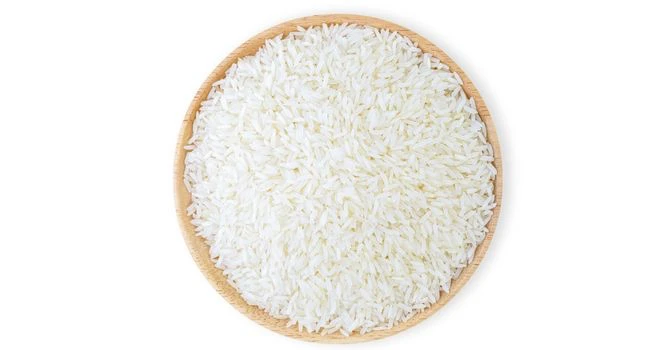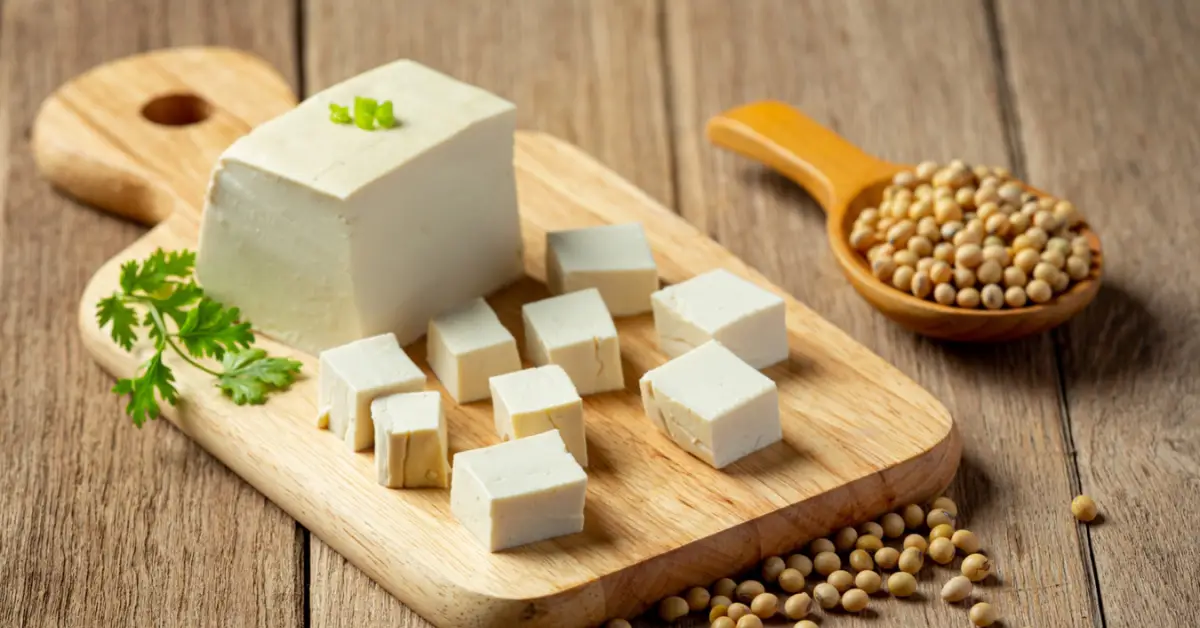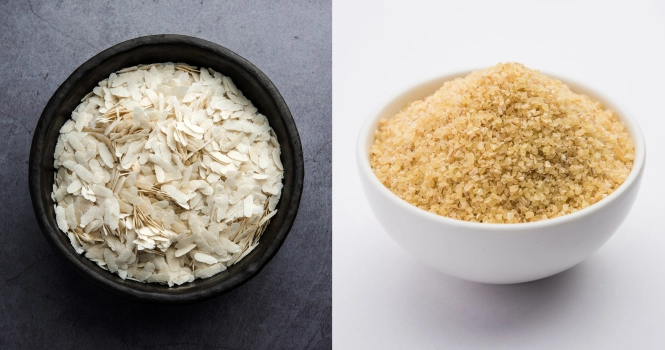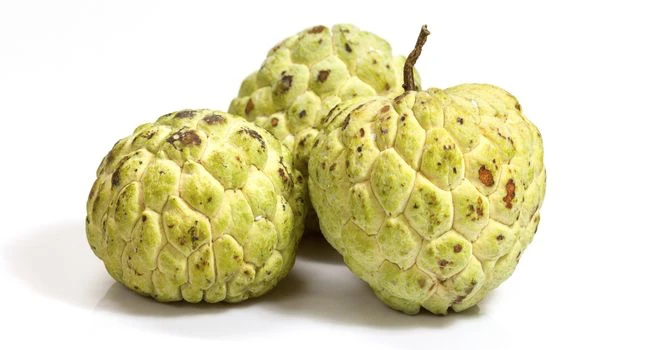Jasmine Rice: The Fragrant Staple of Asian Cuisine

Jasmine rice is a long-grain variety of aromatic rice known for its unique fragrance, reminiscent of the jasmine flower’s sweet scent, hence the name.
Characterized by its soft, slightly sticky texture when cooked, it has a subtle sweetness and nuttiness in taste.
Although the rice is naturally white, the polishing and milling process can give it a subtle jasmine (or pandan) color. Its distinctive characteristics make it a favorite in many kitchens worldwide.
Origin and History
It originally comes from Thailand, where it is known as ‘Khao Hom Mali,’ which translates to ‘fragrant rice.’
It originated in the Chao Phraya river valley, an area with ideal growing conditions for this variety.
The rice has been a part of Thai agriculture and cuisine for several centuries, and its first mass cultivation began in the early 20th century. In 1950, the rice was first officially recognized and named “Jasmine Rice” due to its jasmine-like aroma.
It’s popularity has soared, making it a major Thai export.
Thailand even celebrates National Jasmine Rice Day annually on November 1st to recognize its cultural and economic significance.
Importance in Cuisine and Culture
It holds a special place in Southeast Asian cuisines, particularly Thai, Cambodian, and Vietnamese cuisine. It is the rice of choice for a variety of dishes, from stir-fries to desserts.
In Thailand, it is often served with spicy curries and stir-fried dishes. It’s also the primary ingredient in the famous Thai dessert, mango sticky rice, where the sweet and fragrant characteristics of jasmine rice perfectly complement the ripe mango and coconut milk.
But the importance extends beyond the kitchen. In Southeast Asia, rice symbolizes life and fertility, with Jasmine rice commonly used in religious and wedding ceremonies.
The rice grains are seen as a blessing and a sign of prosperity. Jasmine rice farming is crucial to the rural economy, supporting millions of farmers.
Characteristics of Jasmine Rice
Physical description
It is a long-grain variety of rice, which means the grains are four to five times as long as they are wide. The grains are somewhat translucent and are a shiny, creamy white color in their most common form.
However, brown and black varieties also exist, depending on the degree of processing the rice has undergone. Before cooking, the grains are dry and firm. After cooking, it takes on a slightly sticky consistency, allowing the grains to clump together, while still retaining a certain level of individual grain definition.
Aroma and taste
It is known for its unique aroma, similar to pandan leaves or popcorn.
The scent is due to a natural compound found in the rice, called 2-acetyl-1-pyrroline, which gives the rice its characteristic jasmine-like smell. This aroma intensifies during the cooking process, filling the air with a mouthwatering fragrance.
In terms of taste, it is subtle and delicate, with a slightly sweet, nutty flavor. The grains are soft and have a pleasant, slightly chewy texture when cooked.
It’s taste and aroma pair well with strong, spicy dishes, especially in Southeast Asian cuisine.
Nutritional profile
Jasmine rice, like other rice varieties, is primarily composed of carbohydrates, making it a significant energy source.
A one-cup serving of cooked Jasmine rice provides approximately 160 to 210 calories, the majority of which come from its 44 grams of carbohydrates. The rice also contains about 4 grams of protein and less than 1 gram of fat per serving.
In terms of micronutrients, it is not a significant source. However, it does contain small amounts of calcium, iron, and potassium.
Like other processed grains, white Jasmine rice lacks the bran and germ of the grain, which hold most of the fiber and nutrients. Therefore, brown Jasmine rice is generally considered healthier as it retains the bran and provides more fiber and nutrients.
Despite its limited nutrient profile, it is a gluten-free food, making it suitable for people with celiac disease or gluten sensitivity. Moreover, its low fat and sodium content make it a good option for those managing their weight or blood pressure.
Types of Jasmine Rice
White Jasmine Rice
White Jasmine rice is the most common type of Jasmine rice. It is characterized by its creamy white color, smooth texture, and aromatic fragrance. It is processed to remove the husk, bran, and germ, leaving only the starchy endosperm.
This gives it a mild, versatile flavor and a softer texture, which is why it’s often used in a wide variety of dishes. The processing, however, also removes much of the fiber and some of the nutrients.
Brown Jasmine Rice
Brown Jasmine rice is the less processed version of the Jasmine rice, as only the husk is removed, leaving the bran and germ intact. This gives it a nuttier flavor and a chewier texture than its white counterpart.
It also has a higher nutritional value, as it retains its natural oils and is high in fiber. Brown Jasmine rice also has a slightly longer cooking time than white Jasmine rice due to the presence of the bran layer.
Black Jasmine Rice
Also, also known as Forbidden Rice, is a unique variety of Jasmine rice. The grain has a black hull, and when cooked, it turns a deep purple color. Black Jasmine rice has a rich, nutty flavor and a soft texture.
It’s also the most nutritious of the Jasmine rice varieties, being high in antioxidants due to the dark pigmentation, as well as fiber and protein. Black Jasmine rice is often used in desserts, but it can also add color and nutrition to savory dishes.
Comparison of different types
All types of Jasmine rice share the same aromatic qualities and long-grain structure, but their nutritional value, texture, and cooking time vary. White Jasmine rice is the least nutritious but the quickest to cook and has a mild, adaptable flavor.
Brown Jasmine rice is more nutritious, with higher fiber and nutrients, but takes longer to cook and has a nuttier flavor.
Black Jasmine rice is rich in antioxidants and has a striking color, but takes the longest to cook.
Ultimately, the choice depends on individual nutritional needs, cooking time constraints, and flavor preferences.
Cooking with Jasmine Rice
Ideal dishes and cuisines
It is a staple in many Southeast Asian cuisines, especially Thai, Lao, Cambodian, and Vietnamese. It’s the rice of choice in dishes like Thai green curry, stir-fried vegetables, and steamed fish.
Because of its fragrant aroma, it is also the star ingredient in Thailand’s national dish, khao pad (fried rice), and the popular dessert, khao niew ma muang (mango sticky rice).
Also, it serves as a great base for pilafs, grain bowls, and salads because it holds its shape well and complements a variety of flavors.
Preparation Methods
The typical ratio for cooking Jasmine rice is one part rice to 1.5 parts water, although this can vary slightly based on the specific variety and your desired texture.
To prepare, rinse the grains under cold water until the water runs clear to remove excess starch. Then, combine the rice and water in a pot, bring to a boil, then reduce to a simmer and cover. The rice is usually cooked in about 15-20 minutes for white Jasmine rice, and around 30 minutes for brown and black Jasmine rice.
If you want to infuse more flavor into the rice, you can also cook it in broth or stock. Other methods of preparation include using a rice cooker or an Instant Pot, both of which can simplify the cooking process.
Pairing Ingredients
It’s sweet, nutty taste and fragrant aroma make it a versatile base that pairs well with a variety of foods.
It can be combined with a wide range of vegetables, meats, and sauces. Some traditional pairings include coconut milk in sweet dishes, or stir-fried tofu, prawns, or chicken in savory dishes.
For more exotic flavors, try pairing it with ginger, lemongrass, Thai basil, or coriander.
The rice’s natural fragrance also enhances the flavor of spices such as turmeric, curry powder, and saffron. The possibilities are vast and can cater to any dietary preference or restriction.
Health Benefits and Concerns
Dietary Benefits
The brown and black varieties, has several health benefits due to its rich nutritional profile. It is a good source of complex carbohydrates, which provide your body with energy. It also provides essential vitamins and minerals like vitamin B, iron, and magnesium.
Being a whole grain, brown Jasmine rice has a higher fiber content than its white counterpart, promoting digestive health and helping to maintain a healthy weight by making you feel fuller for longer.
Potential Health risks
While it has many benefits, it should be consumed in moderation as part of a balanced diet. White Jasmine rice has a high glycemic index, meaning it can cause a rapid increase in blood sugar levels.
This can lead to potential health risks, especially for individuals with diabetes or those at risk of developing the condition. In addition, because white Jasmine rice is a refined grain, it is stripped of some fiber and nutrients during the milling process.
Impact on certain health conditions
For those managing diabetes or pre-diabetes, brown Jasmine rice may be a better option due to its lower glycemic index. The higher fiber content slows the absorption of sugars into the bloodstream, resulting in a more gradual rise in blood sugar levels.
On the other hand, Jasmine rice can be a suitable option for those with digestive issues or conditions such as diverticulitis or irritable bowel syndrome (IBS), as it is low in fiber and easier to digest.
In any case, individual dietary needs can vary, so it is always recommended to consult your doctor or nutritionist when making significant changes to your diet.
Jasmine Rice vs. Other Types
Jasmine vs. Basmati
Both rice are often compared due to their fragrant aromas. However, they have distinct differences in taste, texture, and usage. While both have a floral aroma, Basmati has a slightly nuttier flavor compared to the sweet and buttery taste of Jasmine rice. Texture-wise, Basmati grains remain separated and fluffy after cooking, while Jasmine is stickier and clumps together.
In terms of usage, Basmati rice is commonly used in Indian and Middle Eastern cuisines, while Jasmine rice is a staple in Thai and other Southeast Asian cuisines.
Jasmine vs. Long-grain Rice
Long-grain rice is a category that includes various types of rice, including these. The primary difference between these varieties, such as American long-grain white rice, lies in the aroma, taste, and texture.
While both have similar elongated grains, Jasmine has a unique floral aroma and a slightly sweet taste, which is absent in ordinary long-grain rice. Furthermore, it is a bit stickier than most long-grain rice types.
Jasmine vs. Sticky Rice
Jasmine rice and sticky rice (also known as glutinous rice) both originate from Southeast Asia, but they have very different characteristics. Sticky rice has a higher amylopectin content, which gives it an extra sticky, almost glue-like, consistency when cooked.
It’s often used in desserts and dishes that require the rice to stick together. Jasmine rice, while slightly sticky, has a looser consistency, making it suitable for dishes like fried rice or pilaf.
Understanding the Differences and Uses
Recognizing the differences between Jasmine rice and other types of rice is important for getting the desired results in cooking. Each type has its unique characteristics, which lend themselves to specific dishes and cuisines.
In addition to taste, aroma, and texture, factors like nutritional value and glycemic index should also be considered based on dietary requirements and preferences. From the fragrant Jasmine and Basmati to the glutinous sticky rice, each type brings something unique to the table.
Table of Types of Jasmine Rice with Calories, Glycemic Index and Load
| Types of Jasmine Rice | Calories (per 100g, cooked) | Glycemic Index | Glycemic Load |
| White Jasmine Rice | Approx. 130-150 | 68-80 | 14-16 |
| Brown Jasmine Rice | Approx. 110-130 | 55-65 | 11-13 |
| Black Jasmine Rice | Approx. 100-120 | 42-50 | 9-11 |
Frequently Asked Questions
What is Mogra Basmati Rice?
Mogra Basmati rice is a type of Basmati rice known for its long, slender grains and distinctive aroma. “Mogra” refers to the jasmine-like fragrance that this rice variety emits when cooked. Grown primarily in the foothills of the Himalayas, it is prized for its fluffy texture and ability to absorb flavors, making it ideal for a variety of dishes such as biryani, pilaf, and other Indian cuisine.
Its aromatic qualities and delicate taste make it a preferred choice for special occasions and gourmet recipes.
![]()









